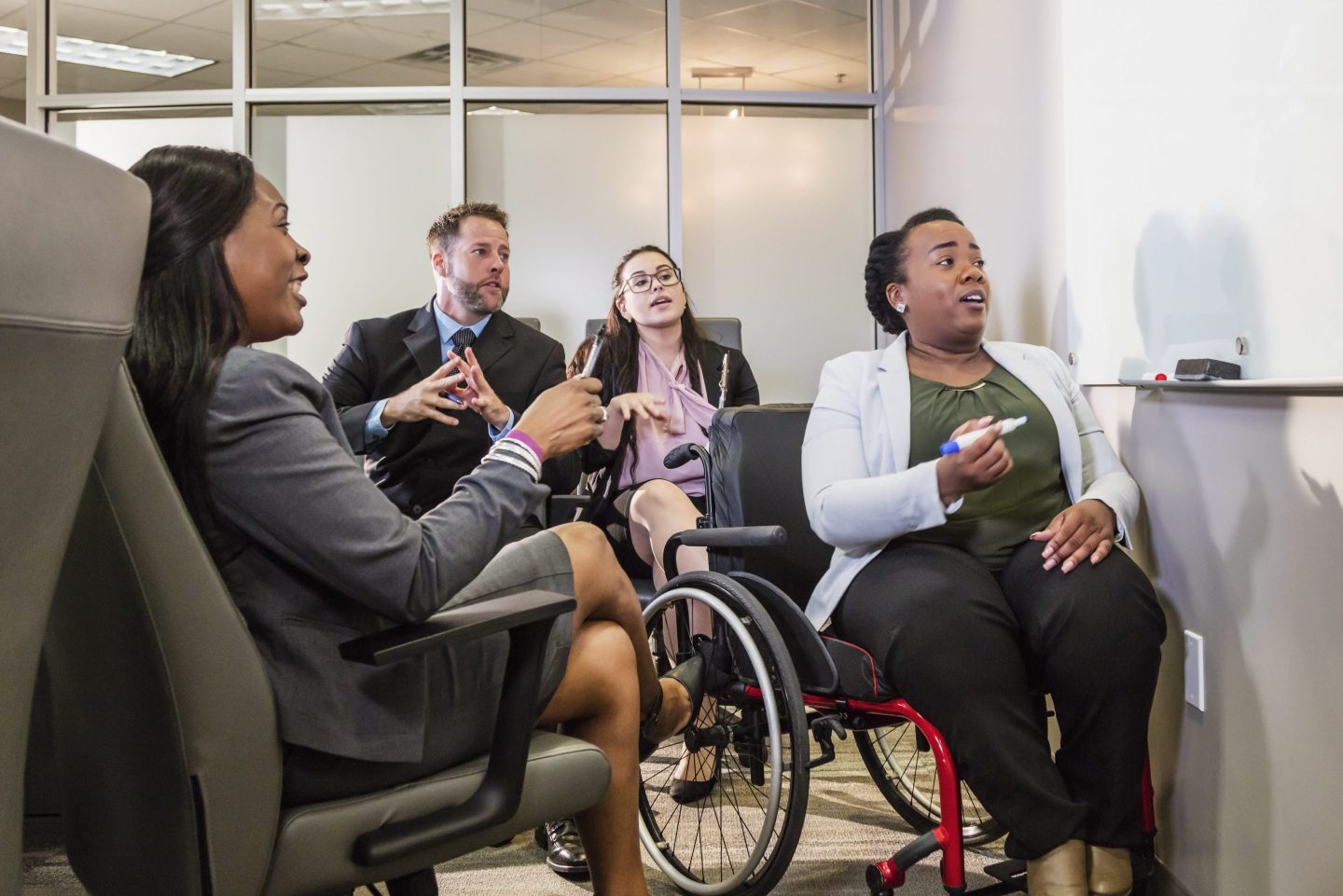Good morning!
People with disabilities are not a monolith. While activists have worked for years to draw attention to diversity within the disability community, particularly in the workplace, a new report from Boston Consulting Group (BCG) has found some startling differences in how people are treated.
Around 34% of all people with disabilities reported experiencing discrimination and harassment at work, according to BCG’s report, which surveyed more than 1,500 people in the U.S. who said they have a current or recurring health condition, disability, or challenge impacting major life activities. But that statistic rose to 39% for BIPOC women with disabilities and 41% for BIPOC men with disabilities. By comparison, 27% of white men with disabilities and 33% of white women with disabilities said they’d experience harassment on the job.
“Disability is a layer that can have a multiplicative impact on the workplace experience, depending on those other identities,” says Hillary Wool, a partner at BCG, coauthor of the report, and cofounder of the firm’s AccessAbility@BCG in North America, an employee resource group. “That has real consequences for how people show up at work: the quality of the work that people are able to do, how emotionally invested people are, how comfortable they’re able to feel within their teams.”
BIPOC women with disabilities also experience some of the most exclusion at work. While 63% of all people with disabilities reported feeling included at their workplace, just 58% of BIPOC women with disabilities said the same, compared to 67% of white men, 63% of BIPOC men, and 62.5% of white women.
Many employers have come to understand that businesses perform better when more employees feel included and treated fairly at work, and workers with disabilities with additional marginalized identities are no exception.
“Business leaders cannot afford to be losing out on the diversity of talent that’s going to be needed to drive towards the future [and] towards the ambitious visions that leaders have,” says Wool. “Whether they’re telling you or not, a lot of your employees have either disabilities or health conditions, and this is impacting their lives and the work that they’re doing for you every day.”
To help improve the workplace for all people with disabilities, leaders can focus on three key areas:
1. Implementing employee-centric policies and programs, such as employee resource groups, paid parental leave, and flexible work arrangements. Employers can also consider making some changes at the leadership level, such as hiring a chief diversity officer and encouraging leaders to connect with employees by openly talking about their identities and experiences.
2. Mentorship opportunities. BCG’s report found that BIPOC women with disabilities’ “BLISS Index” score, which measures sentiments of inclusion in the workplace, jumped by 10 points when workers were paired with a mentor.
3. Improving workplace accommodation processes. Fewer accommodation requests for BIPOC people with disabilities are approved. It’s important to audit those processes, and some third party vendors offer programs that track, analyze, and flag biases.
Paige McGlauflin
paige.mcglauflin@fortune.com
@paidion
Today’s edition was curated by Emma Burleigh.
Around the Table
A round-up of the most important HR headlines.
- IBM is rolling out a new pension plan after putting an end to employer 401(k) contributions and reshaping employee benefits. —New York Times
- Barclays will not offer bonuses to dozens of its low-performing investment bankers. —Business Insider
- Companies are hiring AI firms to track employee Slack messages in real time. —CNBC
Watercooler
Everything you need to know from Fortune.
New benchmarks. Using traditional productivity metrics isn’t the best way to assess performance optimization—managers need to rethink how to get the best out of their workers. —Trey Williams
Reality check. A TikToker’s emotional experience applying to positions in person struck a chord with young applicants facing a difficult job market. —Orianna Rosa Royle
Dismal milestone. Black Americans make up 14.4% of the population, but only 1.6% of Fortune 500 CEOs. The eight Black CEOs represent a record-high, highlighting a need for more representation. —Sunny Nagpaul
This is the web version of CHRO Daily, a newsletter focusing on helping HR executives navigate the needs of the workplace. Sign up to get it delivered free to your inbox.













